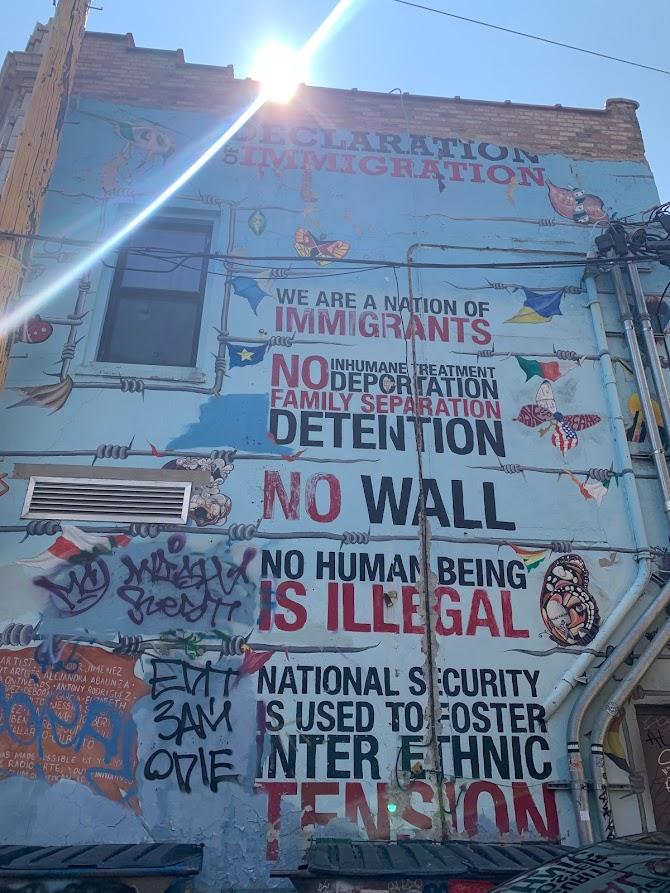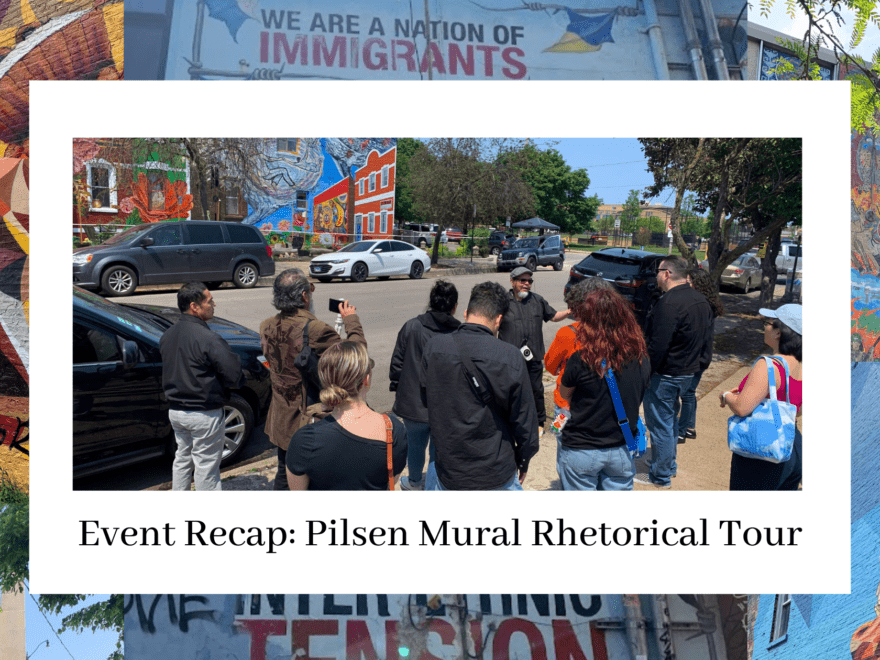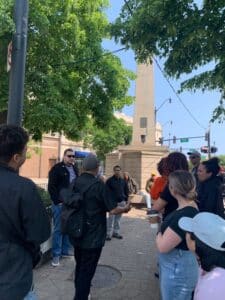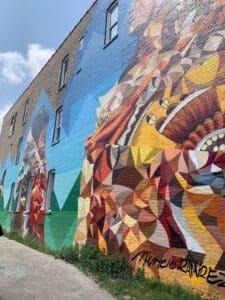In May, the Equity Committee and Student Community Committee hosted a walking tour through Pilsen to explore the history and visual rhetoric of the neighborhood’s vibrant murals. The walk was led by DePaul History professor Dr. Juan Mora-Torres, whose research and teaching interests include Latin American history with an emphasis on the history of the border. Professor Mora-Torres is an editor for the non-profit bilingual online monthly magazine “El BeiSmAn” based out of Pilsen as well, and he sits on the committee of DePaul’s Center for Latino Research/Latin American and Latino Studies Program.
The tour began outside of the Lozano branch of the Chicago Public Library, where a group of DePaul faculty, students, and friends gathered for the sunny Saturday excursion. From there, Professor Mora-Torres led the group across the street to Plaza Tenochtitlan, which showcases precolonial Mexican symbols, and introduced local Pilsen leaders and residents who were gathered for special events at the Plaza.
Throughout the tour, Professor Mora-Torres dove into the history of Pilsen, explaining its long-standing significance as one of the main entry points for migrants entering Chicago. He explained that most of the housing was built between 1870-1920, and that since this period, most residents have been migrants from Eastern Europe and Latin America. The first of Pilsen’s large-scale murals (and the second in all of Chicago) was created in 1969 to reflect the neighborhood’s vibrant Latin American heritage.
“[The murals] are about place-making, how we claim space for ourselves, and how we make that space a place of belonging.”
Professor Mora-Torres
Since the 1960’s, hundreds of murals have gone up in Pilsen as part of this place-making effort, and they have historically focused on three subjects: immigration, education, and community identity. Especially in times of social and economic distress, these murals worked to unify the neighborhood toward common goals, from opposition to the Vietnam War to support of the DREAM Act.
According to Professor Mora-Torres, many of the murals draw inspiration and symbolism from the working-class experience, Indigenous Latin American culture, and resistance to historic and ongoing colonialism. He explained that beginning in the 1960’s “revolution of muralism,” Pilsen public art “no longer glorified gods and rulers, but glorified the people and their culture as heroes.”
“Muralism was a rebellion that people could see and understand in public. From the beginning, murals were political art. The artist sees himself as an ally of change in the transformation of society.”
Professor Mora-Torres

The tour explored how, as a collective, the murals across Pilsen resist “terminal narratives” that situate Indigenous cultures as relics of the past; rather, they illustrate the ongoing importance of Indigenous culture both in Latin America and in the new spaces, like Pilsen, where many Latin American migrants have made their homes.
Additional sites included the 18th Street Frida Kahlo mural, the home of Hector Duarte, the Declaration of Immigration mural, the Peter Cooper Dual Language Academy mosaics, and the National Museum of Mexican Art.
To stay up to date with WRD Department events, follow us on X, Facebook, and Instagram @depaulwrd.




It was an excellent morning in Pilsen! I encourage our students to experience the community for themselves, and please join us next time we head out together😊